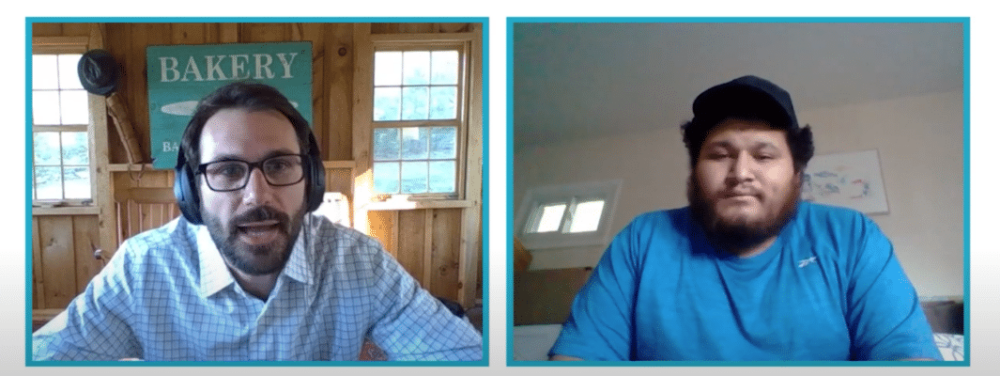

Public Sector Solutions
Key Takeaway
The Career Impact Bond (CIB) is a student-friendly model for upskilling and training programs, supported by Social Finance’s $50 million UP Fund. Students in a CIB enroll in training programs with no upfront costs, only paying back tuition if they gain meaningful employment after the program.
This article was cross-posted from the Council of State Government’s blog.
In any given state across the country, individuals trying to improve their own economic wellbeing face a complex workforce training and licensure system. Imagine Andy, a young man who wants to become a licensed heating, ventilation, and air-conditioning (HVAC) contractor. According to an average of the requirements across 35 states, he will need to gain over 1,000 cumulative days of experience and training, pay almost $400 in fees, and pass two exams before he can do this work. But this is a busy time for Andy, and—in part due to his participation in this HVAC training—his income is much lower than it was before the program. Without full-time employment and the wages that come with it, transportation, childcare, and other expenses are even more of a hardship for Andy. He is forced to weigh the costs of the training program and its strain on his current financial situation against the ultimate benefit of a more promising career.
Without full-time employment and the wages that come with it, transportation, childcare, and other expenses are even more of a hardship for Andy.
This story plays out every day across business sectors, occupations, and states. The occupational licensure process often includes fees, exams, education prerequisites, and other requirements that differ by state and can be obstacles for individuals seeking licensure. These barriers to licensure are particularly acute for those whose backgrounds do not obviously map to an educational prerequisite, for example, or those unable to pay upfront fees, including veterans, people with criminal records, low-wage earners, immigrants with work authorization, and people with disabilities. As the number of occupations in the U.S. requiring licensure increases, states are looking for ways to remove or mitigate barriers to licensure for individuals trying to enter those professions.
At the same time, issues can arise when workers attempt to carry education and experience across state lines. Veterans and immigrants often struggle to translate their education and experience abroad to the U.S. Both instances can lead to unemployment and underemployment as individuals work to meet the licensure requirements of different states.
The economic effects of COVID-19 have exacerbated these issues and placed a spotlight on the need for licensure portability, especially in fields strained by the pandemic, like health care. In addition to expanding telehealth, digital licensing, and interstate compacts, states are looking to expand opportunities for meeting educational requirements or reskilling through expanding apprenticeships.
Promising Models can Help Overcome Barriers to Licensure
Apprenticeships are a well-established “earn while you learn” model that can alleviate the financial difficulties that arise from significant upfront costs in many training programs—costs like those incurred by Andy in the example above. Apprenticeships also can simultaneously fulfill the education and experience requirements that are necessary for many licenses, making them a viable alternative pathway to licensure. And they have a strong track record: the U.S. Department of Labor found that 94% of those who complete an apprenticeship program maintain employment after the program ends, and participation in registered apprenticeships has grown 70% over the last 10 years.
The Career Impact Bond (CIB) is a student-friendly model for upskilling and training programs, supported by Social Finance’s $50 million UP Fund. Supported by philanthropically minded impact investors, students in a CIB enroll in training programs with no upfront costs, only paying back tuition if they gain meaningful employment after the program. CIBs provide students with wraparound supports ranging from career coaching and job placement assistance to emergency aid funds and support for housing, childcare, and transportation. CIBs are student-centered by design: only students who land a job over a predetermined income threshold pay the cost of training, and their repayment is capped both in length of repayment and dollar amount. CIBs also offer “downside protection” such that if a student does not find a job above the income threshold, that student does not pay.
The occupational licensure process often includes fees, exams, education prerequisites, and other requirements that differ by state and can be obstacles to individuals seeking licensure. These barriers to licensure are particularly acute for those whose backgrounds do not obviously map to an educational prerequisite, for example, or those unable to pay upfront fees, including veterans, people with criminal records, low-wage earners, immigrants with work authorization, and people with disabilities.
Early feedback shows that the CIB can be a meaningful tool to increase access to training for low-wage earners, including people of color. In General Assembly’s Career Impact Bond, the percentage of Black students is four times that of their typical student body. Student participation in the American Diesel Training Centers program doubled after the program began using CIBs, with a 90% hiring rate for graduates. While CIBs are a relatively new tool in the workforce training space, they hold real potential to help workers find and embark on new career paths. There is great promise for similar models that help individuals attain the licenses they need for economic mobility.
Pay It Forward Funds (PIFF) promise to bring the CIB mechanism to more students. PIFFs are state-sponsored initiatives that leverage public funding (like federal stimulus dollars) to support CIBs, which may recycle student repayments back into the fund to support future cohorts of students. New Jersey was the first state to announce the development of a PIFF in 2020, and at least six other states are pursuing similar efforts. Read more about CIBs, PIFFs, and many other models of cross-sector partnerships in Workforce Realigned: How New Partnerships Are Advancing Economic Mobility, a recent book from Social Finance and the Federal Reserve Banks of Atlanta and Philadelphia.
Apprenticeships, CIBs, and PIFFs are promising tools that can help people overcome barriers to licensure. By sharpening their focus on innovative approaches to workforce training, states can support individuals like Andy as they earn licensure and improve their economic mobility while helping industries attract and train the workers they need.
Related Insight

A Conversation with Daniel, American Diesel Training Centers Career Impact Bond Graduate
Daniel, American Diesel Training Centers Career Impact Bond graduate, discusses the impact the program has had on his life and career in this video interview.

Investing in Skill Building: The Career Impact Bond
An FJC donor is putting philanthropic dollars to work by investing in economic mobility for low-income workers. The initiative is called the UP Fund, a $50 million pool of catalytic capital raised by Social Finance.